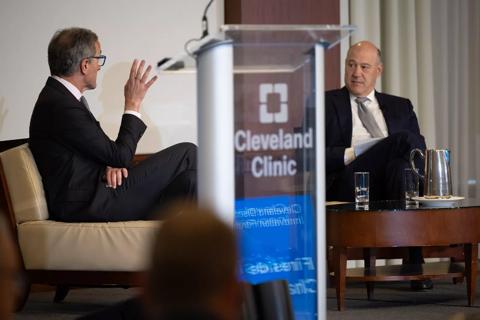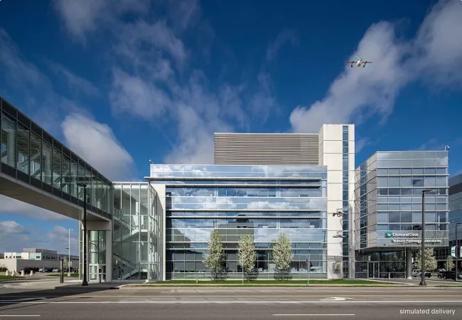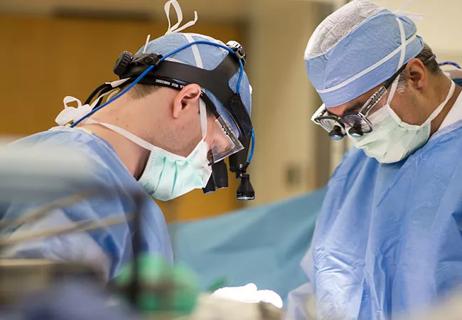Advertisement
Finding cures faster with team science and big data
“It’s an extraordinary time for research,” says Serpil Erzurum, MD, Chair of Cleveland Clinic’s Lerner Research Institute. “How we do it, the tools we use to make it happen, are very different now than they were five or certainly 10 years ago.”
Advertisement
Cleveland Clinic is a non-profit academic medical center. Advertising on our site helps support our mission. We do not endorse non-Cleveland Clinic products or services. Policy
Living longer, healthier lives is within reach, she says, thanks to:
Team science. Turning scientific discoveries into better patient care can happen faster when scientists, clinicians, engineers, mathematicians and others work together. Cleveland Clinic is combining their top doctors and brightest minds into winning teams that advance understanding of diseases and find better ways to treat — and possibly cure — them.
Called “research centers of excellence,” Cleveland Clinic experts form their own teams and apply for resources to move their proposed projects forward. Teams typically have two to three years to accomplish their tasks. Successes are already evident. For example, one team working on aggressive prostate cancer took a laboratory discovery to an early phase trial in patients in just under three years.
“Team science is the future,” Dr. Erzurum says. “This is where all research is heading. And here at Cleveland Clinic, we’ve already started.”
Big data. Thanks to technological advances of the past 10 years, we’ve accumulated more data than ever before. Scientists can understand every molecule of the human body, everything that drives human life and makes bodies resilient (or susceptible) to disease. We can catalog it completely, and do it pretty quickly. We can sequence the entire human genome in less than a day.
With big data, physicians are learning how to treat each person uniquely — not like everybody else. That’s precision medicine.
“Team science and big data, or precision medicine, are accelerating discoveries so we can tailor treatments to each patient at the molecular level,” Dr. Erzurum says.
Advertisement
Her ultimate goal for Cleveland Clinic research? Find cures faster.
“Let’s cure something,” she says. “Research is transforming healthcare and the future for our patients.”
In this video, glimpse the future of research happening now at Cleveland Clinic.
©Russell Lee
Advertisement
Advertisement

Cleveland Clinic and IBM leaders share insights, concerns, optimism about impacts

Cleveland Clinic will offer rapid, pinpoint airborne transport of medications and other medical items

Dedicated committee and surgical fellowship strive for sustainability, energy efficiency, waste reduction

Next-generation mRNA vaccines are among the advancements likely to change healthcare this year

$50 million pledge will help remove sources of lead exposure from Cleveland homes

How to empower caregivers and engage patients in patient safety

The spine surgeon will oversee more than 125 staff physicians in his new role

Merlino rejoins Cleveland Clinic to help execute bold strategic vision